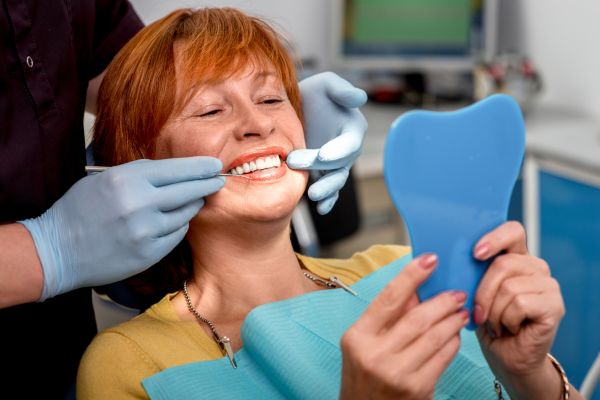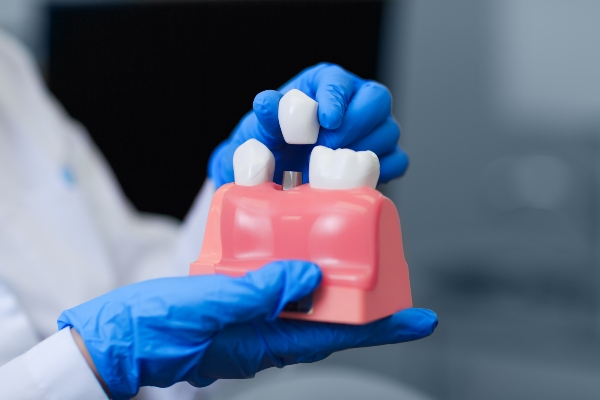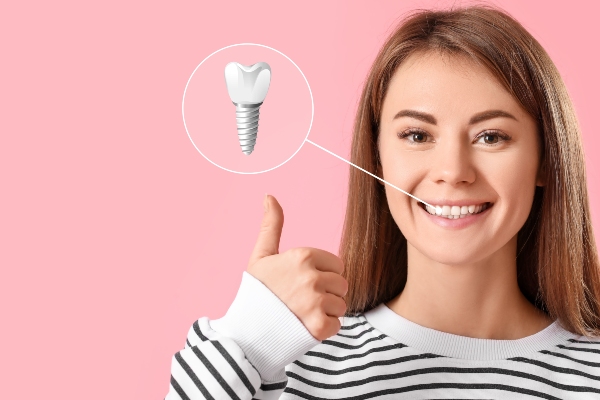Dental Implant Restoration: What Are the Different Parts of a Dental Implant and Crown?

The dental implant restoration procedure has improved significantly over the years. Technology has played a vital role in its improvement. The dental implant process can be used to replace one or more of your lost teeth. An implant tooth can help to restore your smile. In many cases, it can be a better alternative than other tooth-replacement options.
Components of a dental implant restoration
It is important for people to know what a dental implant restoration is and what they are made of. An implant tooth consists of three main components. These include the implant or fixture, the abutment and the restoration. Together, these parts make a construction that allows people to function as they would with a full set of natural teeth.
Implant
An implant is often made of titanium, which is a strong, lightweight metal, and other materials that are accepted well by the body. The implant is inserted into the lower or upper jawbone. It acts as the artificial root of a patient’s tooth. Implants provide the foundation or anchor for a restoration. Implants also provide a fixed platform on which the abutment can be screwed.
Abutment
The abutment screws into the dental implant and provides the surface onto which the crown is attached. Most often they are made of titanium, stainless steel, gold, zirconia or polyether ether ketone. When choosing the material, the dentist will consider the strength as well as the hygienic properties of every option. In many cases, abutments are custom-made in the dental laboratory. The structure looks like a shortened tooth, which is the ideal shape for receiving an implant crown.
Restoration
The restoration can be a crown, bridge or denture that looks like a real tooth. Many people who opt for dental implant surgery pick crowns. Crowns replicate the original teeth to provide an aesthetic appearance and biting surface. It is the top part of the restoration and is the only part that is visible in the mouth. Crowns can be made from a variety of materials, including porcelain, zirconia, metal and ceramic. Crowns can also be made from a combination of these materials.
The completed crown can either be cemented on or screwed into the abutment. A major advantage of a screw-retained implant crown is that it can be easily removed if needed. Even though implants can last a lifetime, crowns may need to be repaired or replaced occasionally. This is often easier to do when the crowns are attached with screws. Cemented crowns are often preferred by some people because these crowns look more like natural teeth.
Takeaway
An implant tooth consists of three main parts: the implant itself, the artificial tooth and the abutment. The titanium post or fixture is inserted into the patient’s jawbone and then the abutment is inserted into it. The last step of the process often involves the attachment of the artificial tooth or crown. The way the different parts connect to each other usually depends on how the implant components were designed. If you have any questions about the different components of dental implant restorations, talk to your dentist.
Are you considering a dental implant restoration in the Forest Hills area? Get more information at https://metrosmiles.com.
Check out what others are saying about our services on Yelp: Read our Yelp reviews.
Recent Posts
Most people want to have dental implants right after dental extraction. Replacing the lost tooth is a priority. This can prevent more complications as the mouth heals. Understanding the process of getting implants after dental extraction can help prepare you for your appointment. Here are the details about getting dental implants after a dentist removes…
Peri-implantitis is a painful condition that affects the dental implant site. If left untreated, the consequences are irreversible, so it is important to maintain a checkup schedule with an implant dentist. However, an implant dentist can save your implants, gum tissue, and jawbone without much hassle if caught in its early stages. This article will…
Getting dental implants as a replacement for removable dentures can be a rewarding move. These restorations are stable and lasting. You can smile, laugh, eat, and speak without worrying that they will slip out of your mouth. Here are the benefits of getting dental implants over removable dentures.Dental implants are effective in restoring teeth. Unlike…
People with tooth loss can smile with confidence again, thanks to the help of an implant dentist. Tooth loss can greatly impact a person's quality of life, affecting how they speak, eat, and feel about their smile. Also, tooth loss can eventually lead to bone loss and changes in facial structure. Fortunately, an implant dentist…


